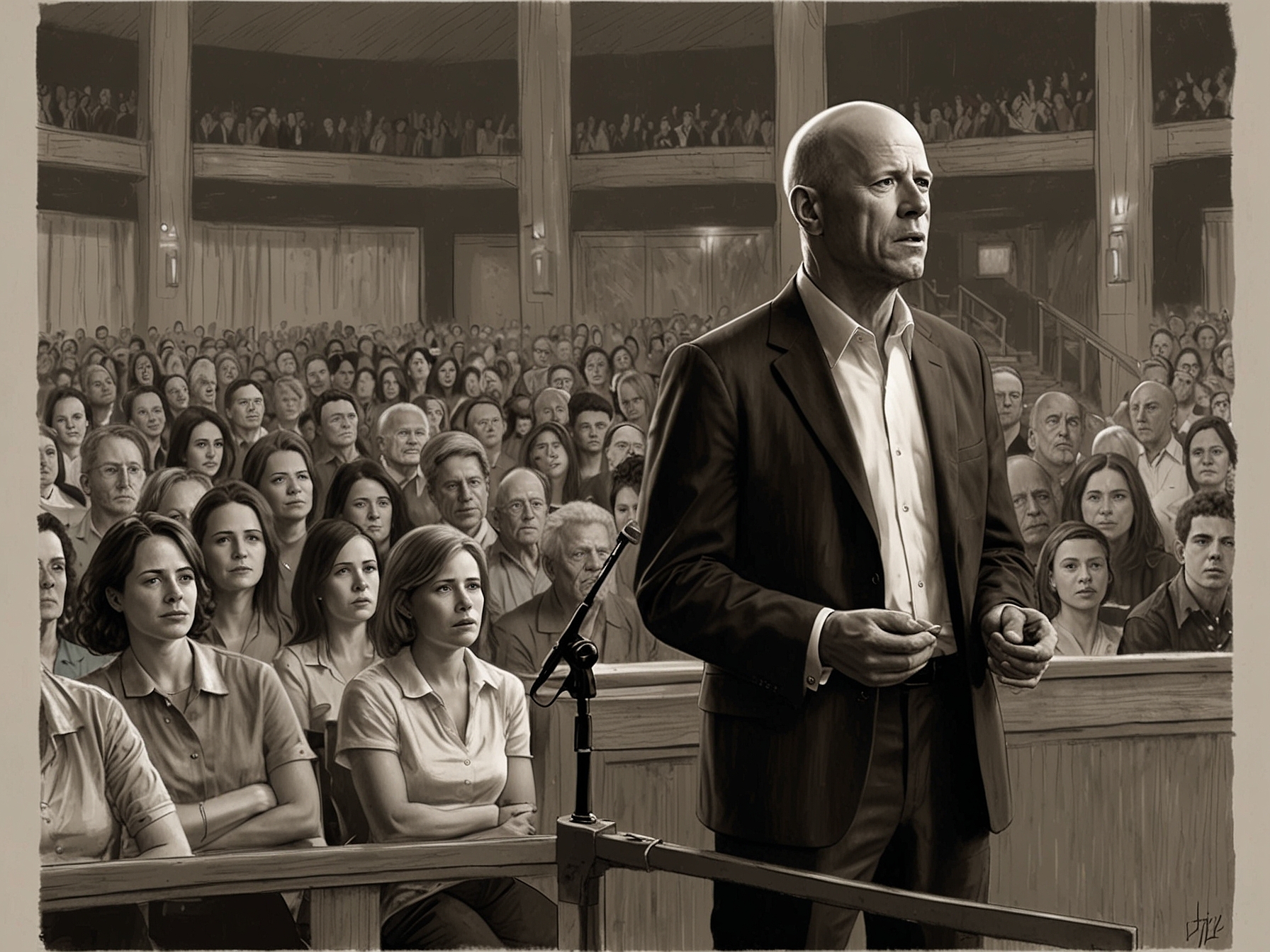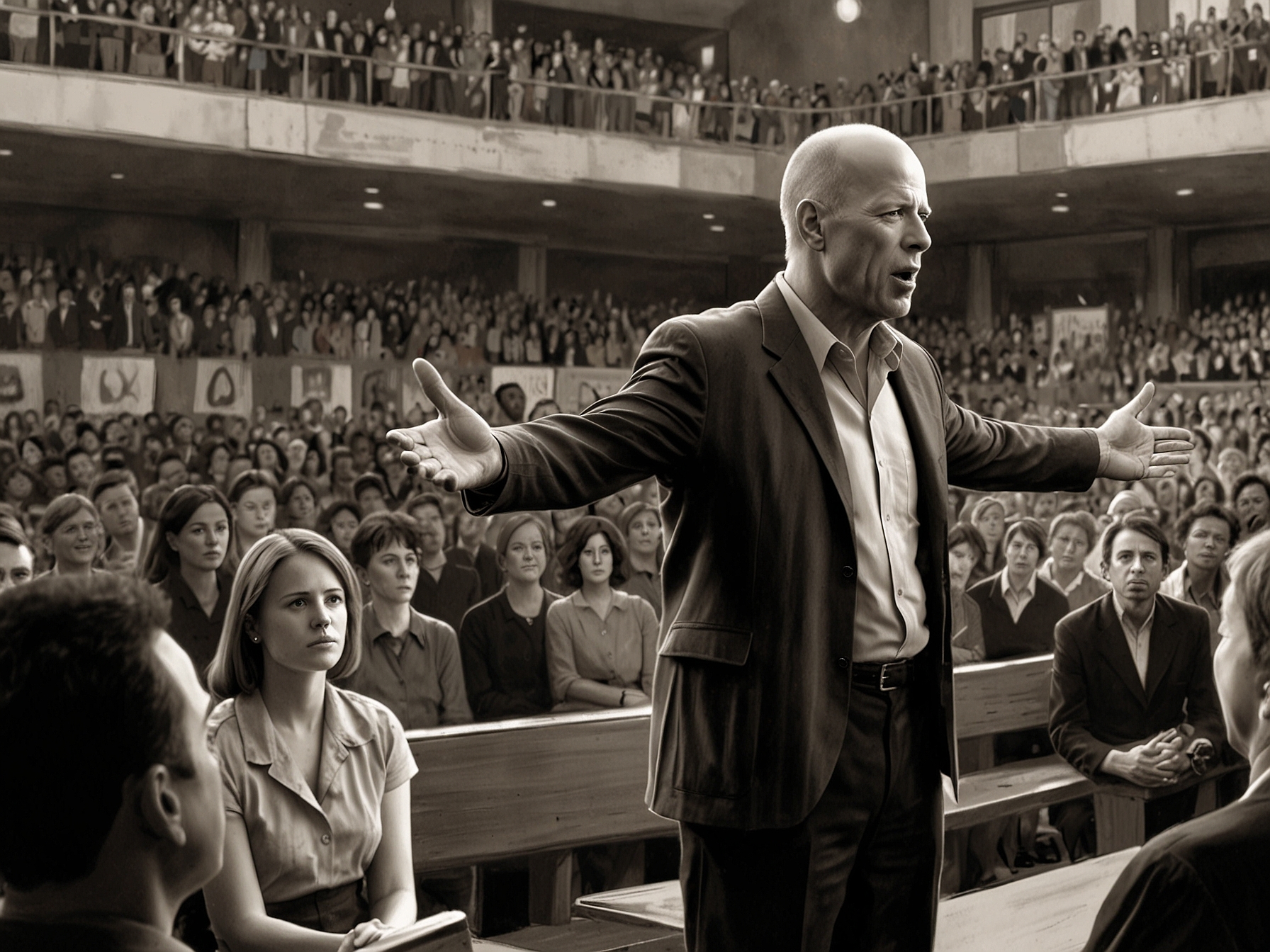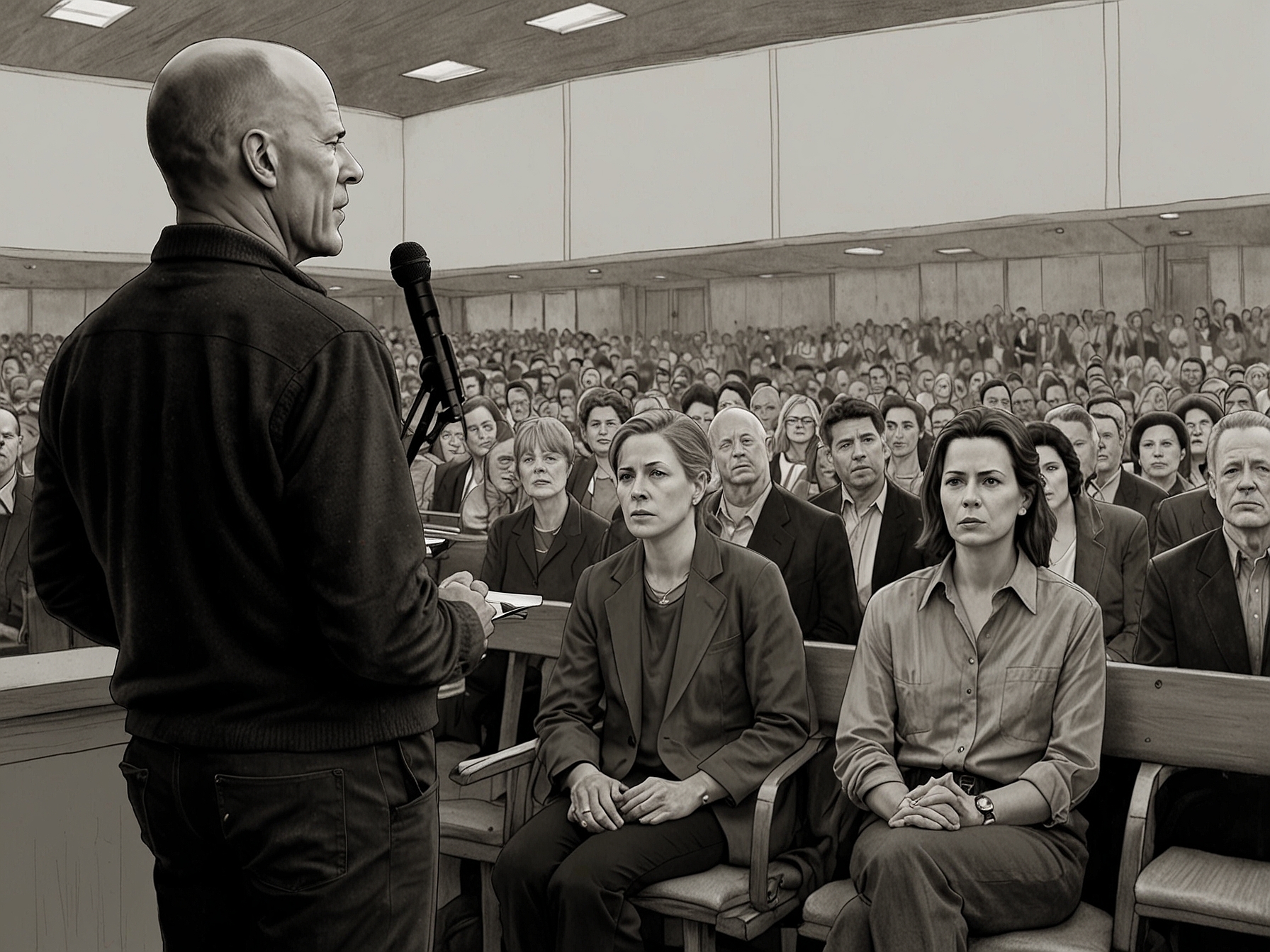Understanding the Overlap
For many, childhood challenges shape who they become. For Bruce Willis, a stutter was a constant companion. It became a lens through which his family viewed his speech changes.
When shifts began, they initially thought it was just his lifelong struggle manifesting itself again. Emma Heming Willis shared her thoughts on this journey. In her reflections, she opened up about seeing his speech patterns evolve over time.

It was not alarming at first. They believed it was merely Bruce being Bruce, managing his stutter as best as he could. How often do we overlook changes that feel familiar?
Early Signs Misunderstood
A diagnosis is often a long time coming. Before a formal label like frontotemporal dementia was applied, there were signs. Language barriers emerged, words scattered, coherence began to falter.
Emma recalled the moments now seen through a different lens. Those weren’t just random slips; they were early symptoms of something more concerning. In an interview, she expressed disbelief.

“Never in a million years would I think it would be a form of dementia for someone so young,” she said. This raises a question: Are we aware of the subtle cues our loved ones exhibit?
The Spectrum of Dementia
Understanding frontotemporal dementia means understanding its nuances. It’s not well-known, yet it silently affects thousands yearly. Approximately 50,000 to 60,000 Americans face this cognitive challenge.
The effects vary; language, behavior, and daily routines slowly deteriorate. For individuals like Bruce, the gradual decline can feel surreal. Daily conversations that once flowed easily now require immense effort.

Watching someone you love struggle is heartbreaking. Their essence may still be there, but the voice feels different.
Awareness and Advocacy
Bruce’s story is a reminder to us all. Recognizing signs matters. His family wishes they had acted sooner.
They urge people to be vigilant. Whether it’s speech, behavior, or other changes, we need to pay attention before it’s too late. Education about FTD is vital.
Many still have misconceptions about such disorders. Are we doing enough to support awareness? Every small discussion can lead to understanding and action.
It’s a call for compassion in a world often lost on its complexities.
Reflections on Love
Through these struggles, love has remained a guiding light for Bruce and Emma. Their partnership navigates the uncharted waters of dementia together. It showcases the strength of human connection even amid fading memories.
Connection is crucial. Families must support one another through these invisible battles. Just like Willis, many of us may nurture deep-seated fears about potential degenerative conditions.
The journey may remain steep, but love can make the load lighter.




